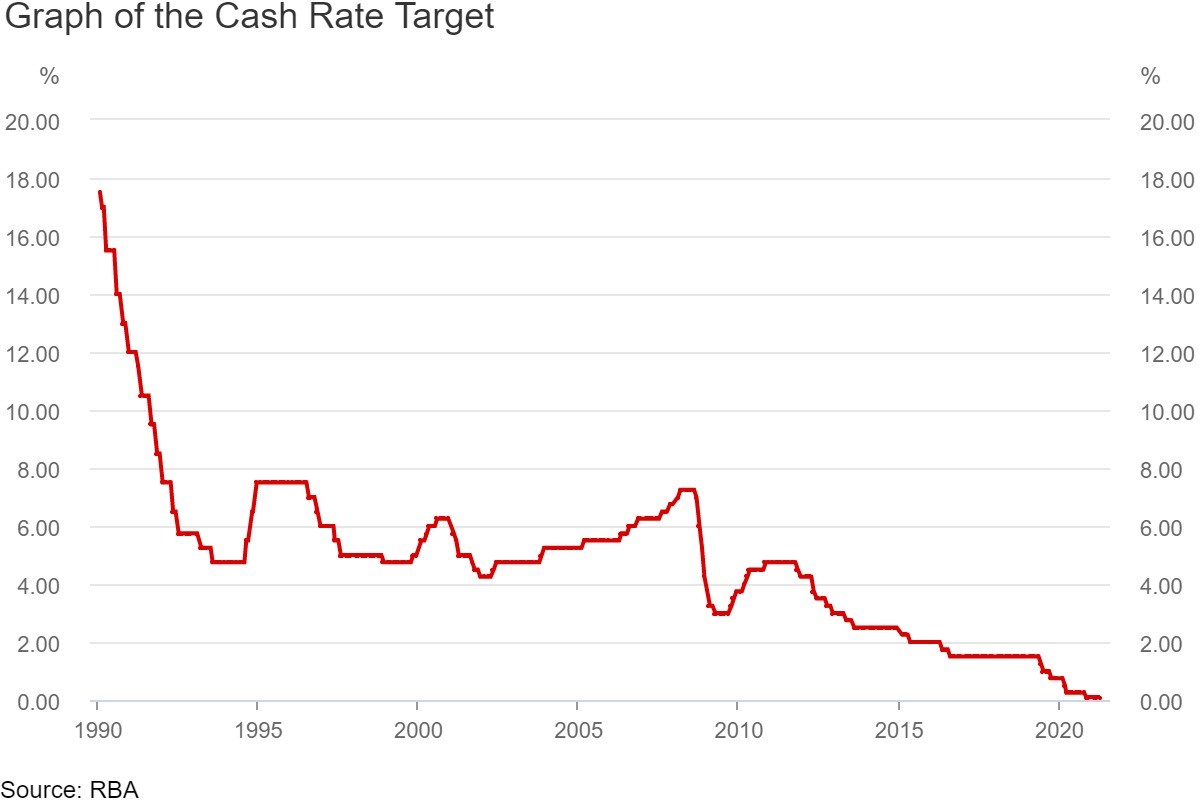Sponsored Content
You may have heard the terms ‘ultra-low’ and ‘lower for longer’ interest rates in the news over the past few months. Have you ever wondered why this is happening and how the low cash rate might impact on you as an investor?
Read on as we break down everything you need to know about the current economic environment.
The Reserve Bank of Australia and Monetary Policy
Firstly, it’s important to be aware of what the Reserve Bank of Australia (RBA) is and what it does.
The RBA is Australia’s central bank, and it is responsible for maintaining a strong performing financial system. The primary way the RBA achieves this is through monetary policy.
As part of its responsibility for Australia’s monetary policy, the RBA sets the cash rate target for the interbank lending market – that is, where commercial banks and other financial institutions can borrow or lend money among themselves in response to short-term fluctuations in their liquidity position and forecasts.
The RBA adjusts the ‘cash rate’ with the focus of controlling money supply and it influences and is influenced by economic conditions such as consumption, employment, inflation and liquidity.
What’s happening in the current market?
Over the past few decades, there have been several events that have caused shocks to the financial system. The economic impacts of those events have been quite significant, as seen in the Global Financial Crisis, ‘Taper Tantrum’ in 2013 and, more recently, COVID-19.
While COVID-19 was primarily a public health issue, the social measures introduced to mitigate the health crisis, such as lockdowns, caused a significant rise in unemployment, reduction in consumer spending and, ultimately, a weaker Australian dollar.
To assist in minimising the impacts of a potential recession, the RBA reduced the cash rate twice in March 2020 from an initial 0.75% to 0.25%, and again in November to 0.1%. There was also a conscious coordination of Fiscal policy.
This proved to be an effective approach and, by the fourth quarter of the 2020 calendar year, broad signs of recovery were seen across multiple sectors.
The property market in particular, saw signs of recovery where demand had built over the prior six months due to cautious consumer sentiment. This demand has begun to flow through the economy and property prices have been the standout economic indicator for the 2021 calendar year to date.
A record low cash rate
Thirty years ago, in January 1990, the cash rate was at a high of 17.50%. The rate has been gradually falling ever since, with the last increase in the cash rate now over a decade ago where it was raised from 4.50% to 4.75% in November 2010.
To understand just how low the current cash rate is, let’s look back at historical cash rates.

The current cash rate target at 0.10%, is the lowest Australia has ever seen.

